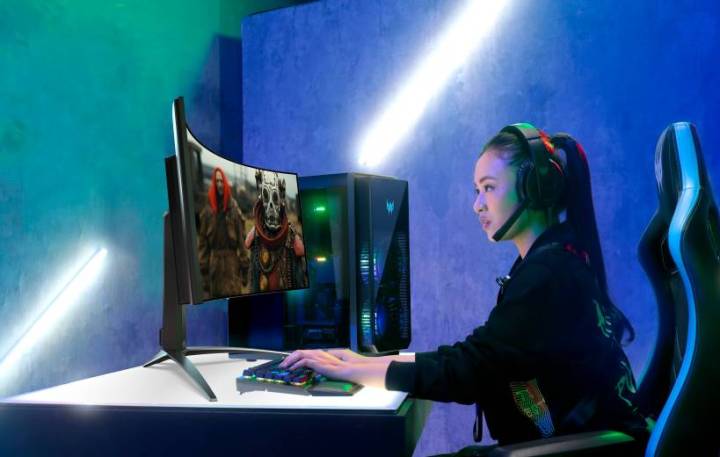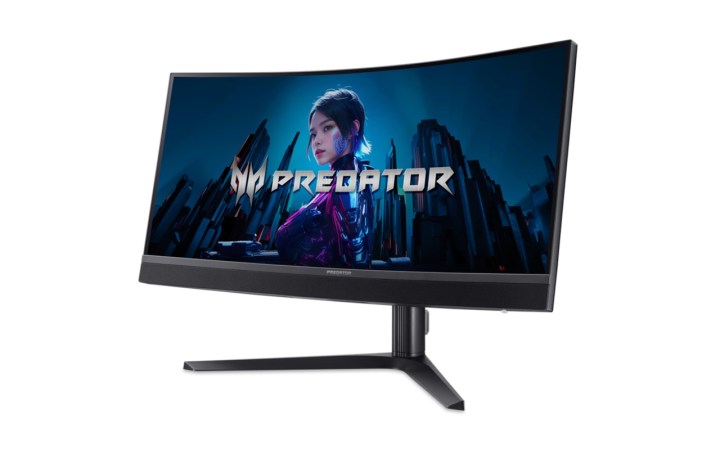
Acer has brought four new Predator gaming monitors to CES 2024 this year, two of which are OLED and two of which are mini-LED. Excluding Samsung, Acer might now have one of the largest lineups of OLED and mini-LED gaming displays.
Let’s start with the Predator Z57, the largest and most audacious of the four. The massive mini-LED monitor uses the same panel as the Odyssey Neo G9, and boasts an insane resolution of 7680 x 2160 and 2,304 local dimming zones. Unlike the Odyssey Neo G9, however, the Predator Z57 only has a 120Hz refresh rate instead of 240Hz.

The other mini-LED monitor is the Predator X34 V3, the third generation of Acer’s 34-inch, 21:9 ultrawide display. It has a resolution of 3440 x 1440 and a 180Hz refresh rate. There are a couple of major changes this time, namely going from an 1800R curve to a more extreme 1500R. The Predator X34 V3 also has a larger speaker bar under the display with two 5-watt speakers to deliver audio. Based on the photo, the stand and base also have a new, simpler design.
Next up are the two OLED monitors, the Predator X39 and Predator X34 X. The standout feature of both models is the curve, which is 800R. We’ve seen 800R curves on monitors, but usually on much larger ones. This aggressive of a curve on a 34-inch monitor is much more uncommon, making for a very unique-looking monitor.
Of course, the X34 X and X39 are both OLED, but the peak brightness is just 450 nits. So, don’t expect HDR performance quite at the level of the Alienware 34 QD-OLED. Both models have a refresh rate of 240Hz and a resolution of 3440 x 1440.

The Predator Z57 will cost $2,500, the Predator X34 V3 will cost $900, the Predator X39 will be $1,500, and the X34 X will be $1,300. All four monitors will be available starting in North America in the second quarter of 2024.
Acer has also announced an update to its first 3D monitor, the Predator SpatialLabs View 27. The display was announced in October 2023 as a follow-up to the SpatialLabs 3D gaming laptop we saw last year at CES. The monitor has a 4K resolution, 160Hz refresh rate, and the ability to switch between 2D and 3D visuals. The display hasn’t been launched yet, but will officially be releasing in the second quarter of 2024 for $2,000.


